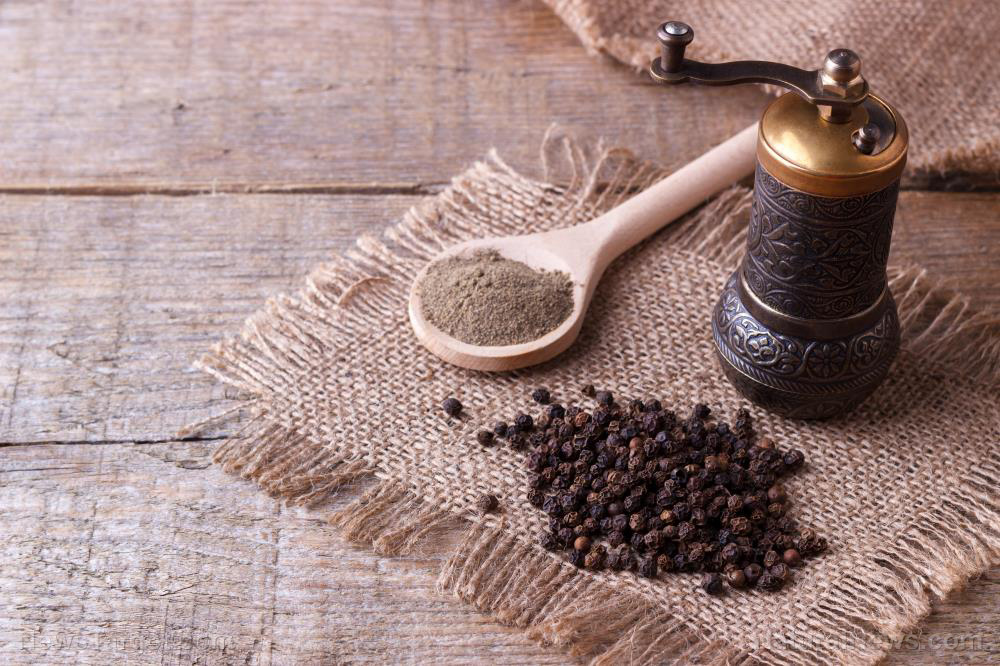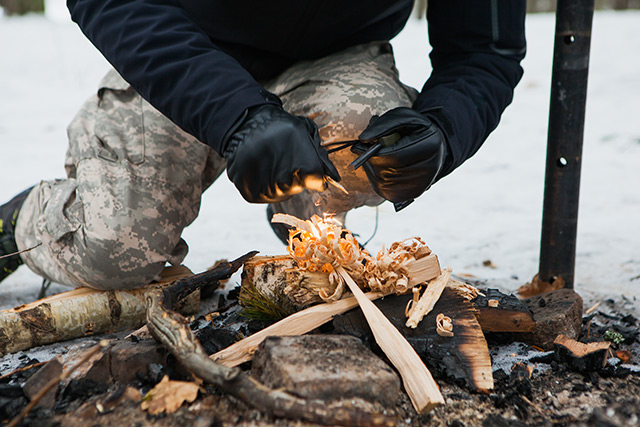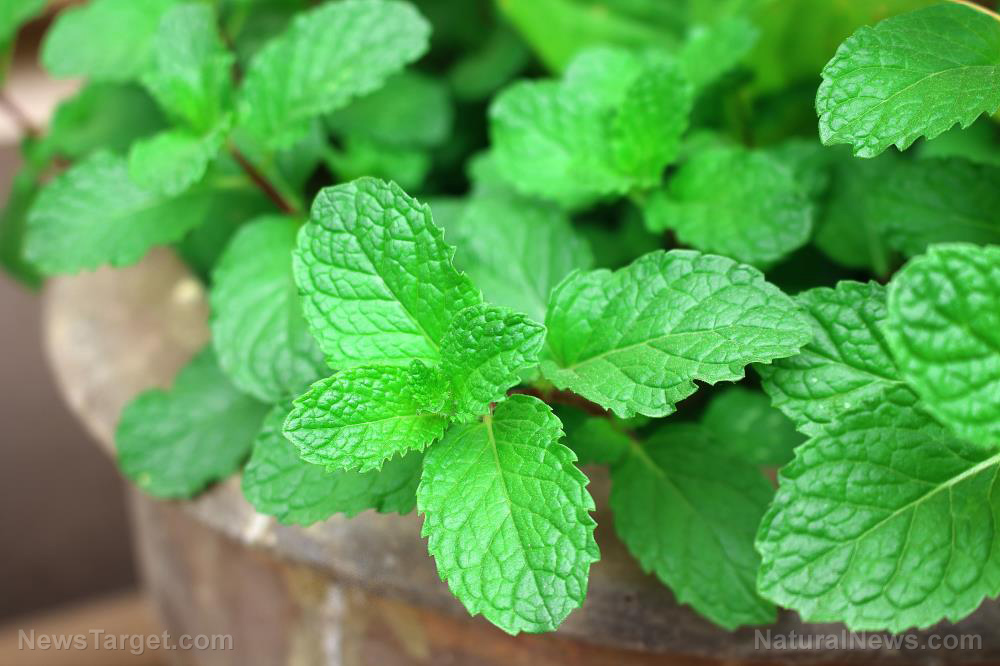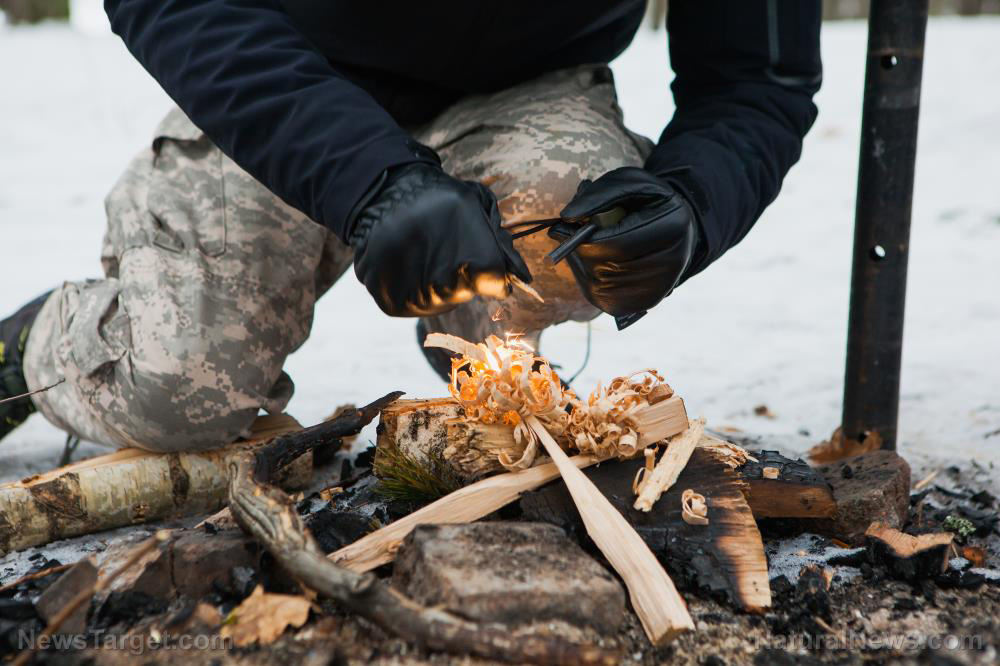Unusual uses for pepper that resourceful preppers know
11/16/2018 / By Zoey Sky

Did you know that aside from being a versatile spice, black pepper (Piper nigrum) has other survival uses? (h/t to MyFamilySurvivalPlan.com)
Survival uses of black pepper
Black pepper is commonly used in various dishes, and after salt, it’s probably the second most used seasoning. Make sure you stock up on this spice, which also has several survival uses.
- It can brighten the colors of your clothes – Black pepper can help bring color back to faded clothing. Add a teaspoon of black pepper dust to the wash. Aside from making colored shirts look brighter, it can also prevent the colors from running.
- It can clear up your sinuses – If you have a cold or if you’re suffering from sinusitis, consuming dishes with an extra helping of black pepper can help ease the symptoms of these conditions. If you’re not fond of spicy food, try this alternative instead: Get eucalyptus drops then combine them with liquid pepper. Put the mixture in a steamer to clear your clogged sinuses immediately. (Related: Black Pepper Offers a Powerful Boost to Overall Health at a Very Low Cost.)
- It can detoxify the liver – If you want to keep your liver healthy, a glass of pepper drink can help. Take one cup of flat, filtered water and add the juice of one entire lemon or lime, a teaspoon of maple syrup (or other natural sweetener), and ¼ teaspoon of cayenne pepper. Drink the concoction every morning before breakfast to keep your liver in good shape.
- It can get rid of ants – To keep ants away from food or ingredients with sugar compounds, which always attract these insects, sprinkle some black pepper in areas that they frequent. The black pepper is sure to repel the ants.
- It can keep bugs out of your garden – Combine equal parts of black pepper and flour to make a natural bug repellent. Sprinkle the mixture around your crops to keep the bugs away.
- It can keep squirrels away from your bird feeder – If squirrels keep stealing food from your bird feeder, sprinkle some cayenne pepper around the feed. The pepper will keep the squirrels away, but it won’t bother the birds, which have a natural tolerance for pepper. In fact, cayenne pepper contains vitamin A that can help improve bird plumage.
- It can relieve migraines – If you’re suffering from a migraine headache, black pepper may offer some relief. Add half a teaspoon of black pepper to one glass of water, then mix it well before drinking the concoction. For a smaller glass, a ¼ teaspoon of pepper will do. The remedy should take effect after 40 minutes, but if you don’t notice any changes in your condition, make another black pepper concoction and drink it again.
Keep black pepper in your food stockpile so you always have access to a useful spice with many survival uses.
Fast facts on black pepper
Common black pepper beads come from the plant’s berries/fruits. The fruits, or peppercorns, are dried, crushed into a fine dust, or used whole. Black pepper’s sharp, pungent smell and taste is due to a chemical called piperine.
Called the “king of spices,” black pepper originally comes from the tropical evergreen rain forest of South Indian Kerala state. Black pepper spread throughout the globe with help from Arab and Indian traders.
- Pepper plants start producing small round berries after about three to four years.
- Technically, the pepper berry is a fruit/drupe. It measures around 5-6 mm in diameter, and the fruit encloses a single large seed at its center.
- Commercial peppercorns sold in markets may have different colors, but all kinds of peppercorns come from the same pepper fruit picked from the plant at different stages of maturity and are processed using various methods.
- In general, peppercorns harvested while they’re half-mature are just about to turn red. These are left to dry under the sun until they shrivel and turn black.
- Green peppercorns are picked while the berries are still unripe and green.
- White peppercorns are made by soaking ripe berries in brine to remove the dark, outer skin and expose their inner white pepper seed.
You can read more articles about other versatile spices at FoodSupply.news.
Sources include:
Tagged Under: black pepper, food supply, green living, off grid, peppercorns, pest control, Piper nigrum, Piperaceae, piperine, preparedness, prepper, prepping, preserving food, Spices, survival, survival food, sustainable living



















